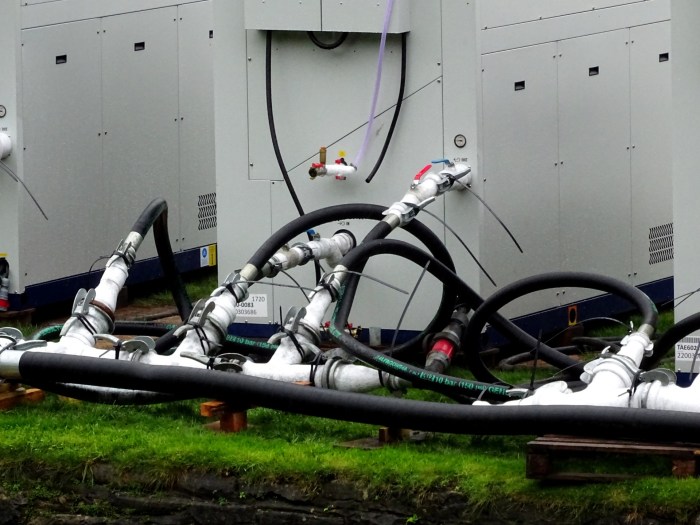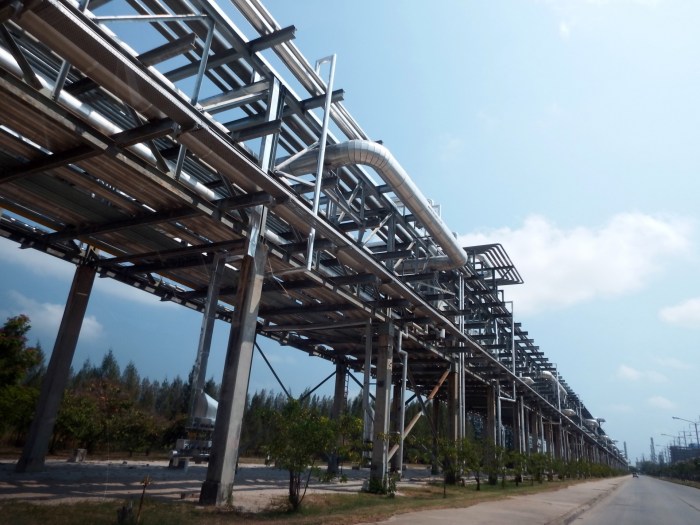
Industrial Safety Gear Suppliers are the unsung heroes of workplace safety, providing essential equipment that keeps employees secure across a variety of industries. With the rise in workplace accidents, the importance of having the right safety gear cannot be overstated. From helmets to gloves, these suppliers offer a range of products tailored to meet specific industry needs, ensuring that workers can perform their duties safely and efficiently.
Understanding the different types of safety gear and their applications is key. Whether it’s protective clothing for hazardous environments or specialized equipment for construction sites, each piece plays a vital role in reducing injury risk. Statistics reveal that investing in quality safety gear correlates with a significant decrease in workplace accidents, making it a critical component of any safety strategy.
Industrial Safety Gear Overview
Industrial safety gear plays a crucial role in protecting workers across various sectors, including construction, manufacturing, and healthcare. The primary purpose of this gear is to minimize the risk of accidents and injuries while enhancing overall workplace safety. By wearing appropriate safety equipment, employees are better equipped to handle hazardous conditions, safeguarding not only their health but also their productivity and morale.Safety gear encompasses a wide range of equipment, each designed for specific applications and environments.
The types of safety gear include personal protective equipment (PPE) such as helmets, gloves, goggles, hearing protection, and respiratory devices. These items are tailored to address the unique risks associated with different jobs. For instance, construction workers may require hard hats and steel-toed boots to protect against falling objects, while healthcare workers often use masks and gloves to prevent exposure to infectious materials.
Statistics on Workplace Accidents and Safety Gear
Understanding the impact of safety gear on workplace accidents reveals its vital importance in ensuring employee safety. The National Safety Council reports that workplace injuries cost employers over $170 billion annually in medical care, lost wages, and other expenses. Moreover, in the United States, there were approximately 4.6 million non-fatal workplace injuries and illnesses reported in a year. The use of safety gear significantly reduces the likelihood of these incidents.Key statistics highlight the effectiveness of personal protective equipment in accident prevention:
-
Employers that invest in safety gear can reduce injury costs by 20-40%.
-
Injuries in the construction industry can be reduced by 50% with the proper use of safety equipment.
-
According to OSHA, proper protective gear can prevent nearly 1,000 deaths annually.
The correlation between safety gear and reduced workplace injuries underscores the importance of equipping employees with the right protection to create a safer work environment. Investing in safety gear not only complies with legal requirements but also cultivates a culture of safety that benefits both employers and employees.
Suppliers of Industrial Safety Gear

In the world of industrial safety, selecting the right supplier for safety gear is paramount to ensuring workplace safety and compliance. A reliable supplier not only provides high-quality equipment but also supports businesses in fostering a culture of safety. This segment will delve into some of the leading suppliers in the market, what to consider when choosing a supplier, and real-world case studies that illustrate the impact of quality safety gear.
Leading Suppliers and Manufacturers in the Market
The industrial safety gear market is populated with numerous suppliers, but a few stand out due to their reputation for quality, innovation, and reliability. Some of the leading suppliers include:
- 3M
-Known for its extensive range of personal protective equipment (PPE) including respirators, helmets, and hearing protection. - Honeywell
-Offers a diverse portfolio of safety products including fall protection, hand and eye protection, and safety footwear. - DuPont
-Specializes in high-performance protective apparel featuring materials like Tyvek and Kevlar. - MSA Safety
-Renowned for advanced safety solutions in respiratory protection and gas detection systems. - Carhartt
-Provides durable clothing and gear, known for their work apparel suited for a rugged environment.
These suppliers have earned their place in the industry by consistently delivering products that meet high safety standards, thus gaining the trust of businesses across various sectors.
Criteria for Selecting a Reliable Safety Gear Supplier
Choosing a safety gear supplier is crucial for the effective management of workplace safety. Here are key criteria to consider when selecting a reliable supplier:
- Product Quality: Ensure that the products meet relevant safety standards and certifications. Look for suppliers that provide documentation and testing results.
- Range of Products: A good supplier should offer a comprehensive range of safety gear to meet varied needs, from head protection to fall safety equipment.
- Customer Service: Evaluate the responsiveness and support provided by the supplier. Prompt customer service can make a significant difference in urgent situations.
- Reputation and Reviews: Research the supplier’s reputation through reviews and testimonials from other businesses in your industry.
- Price and Value: While price is a factor, consider the value offered. Opting for the cheapest option may compromise safety and result in higher costs in the long run.
A well-chosen supplier not only provides quality gear but also contributes to building a culture of safety within the organization.
Case Studies of Improved Safety through Quality Gear Procurement
Investing in high-quality safety gear has shown to significantly enhance workplace safety. Below are notable case studies illustrating the positive outcomes of procuring reliable safety equipment.
In a manufacturing facility, after switching to high-visibility vests from a reputable supplier, the incident rate of near-misses decreased by 30% within the first six months.
A construction company, which adopted advanced fall protection harnesses from a leading brand, reported a 50% reduction in fall-related incidents over the course of a year.
These examples highlight the tangible benefits of collaborating with established suppliers for safety gear, showcasing how quality equipment not only protects employees but also enhances overall productivity and morale within the workforce.
Related Industries and Services

Industrial safety gear plays a crucial role across various sectors, ensuring that workers are protected while enhancing overall work standards. These essential items not only safeguard employees from potential hazards but also contribute to an organizational culture that prioritizes health and safety. Understanding how this gear intersects with different industries leads to a comprehensive view of its impact on employment and workplace communication.
Impact on Employment and Work Standards
The implementation of industrial safety gear significantly influences employment practices and work standards in various industries. Organizations that adopt rigorous safety protocols often see enhanced job satisfaction and reduced employee turnover. For instance, companies in the construction sector are mandated to provide personal protective equipment (PPE) as part of their compliance with Occupational Safety and Health Administration (OSHA) regulations. This not only protects workers from on-site hazards but connects to higher rates of productivity and fewer accidents, leading to lower insurance premiums.
Additionally, sectors such as manufacturing, healthcare, and mining have also witnessed substantial changes in work standards due to safety gear. These industries implement regular training sessions on proper safety gear usage, leading to a better-informed workforce and fewer workplace injuries.
Relationship Between Safety Gear and Telecommunications
Industrial safety gear is not isolated from advancements in workplace communication technology, particularly in telecommunications. Modern safety gear often integrates communication devices that enhance safety protocols in environments where instant communication is essential, such as in emergency situations or hazardous work settings. For example, safety helmets with built-in communication systems allow workers in the field to stay connected with supervisors and emergency response teams, facilitating rapid response to incidents.
This integration streamlines operations and ensures that safety protocols can be executed promptly, reducing response times and potentially saving lives.
Role of Textiles and Nonwovens in Innovative Safety Gear
The development of innovative safety gear materials heavily relies on advancements in textiles and nonwovens. These materials are engineered to provide durability, comfort, and protection against a wide range of hazards. Nonwoven fabrics, for instance, are increasingly used in protective clothing, offering breathability while effectively blocking harmful particles.Innovative textiles are being designed with features such as moisture-wicking, flame resistance, and antimicrobial properties.
In industries like firefighting and healthcare, these advanced materials ensure that workers are safeguarded against extreme conditions and biological hazards, respectively. Moreover, research into smart textiles that can monitor vital signs and environmental conditions represents the future of industrial safety gear. This technology could revolutionize how safety gear functions, providing real-time data to enhance worker safety and response strategies.
Final Summary
In summary, partnering with reliable Industrial Safety Gear Suppliers is essential for fostering a safe work environment. By prioritizing quality safety gear, companies not only protect their workforce but also enhance overall productivity and morale. As industries evolve, so too do the standards of safety gear, making it crucial for organizations to stay informed and proactive in their safety measures.
Commonly Asked Questions
What types of safety gear are essential for workers?
Essential safety gear includes helmets, gloves, goggles, hearing protection, and safety shoes, tailored to specific industry needs.
How do I choose a reliable safety gear supplier?
Look for suppliers with good reviews, industry certifications, and a track record of timely delivery and customer service.
What is the role of safety gear in reducing workplace accidents?
Safety gear acts as a protective barrier, significantly lowering the risk of injuries in hazardous environments.
Are there specific regulations for safety gear in different industries?
Yes, various industries have specific safety standards and regulations that must be adhered to regarding safety gear.
What innovations are being made in safety gear materials?
Innovations include the use of lightweight, breathable fabrics and advanced materials that offer better protection without compromising comfort.





